 Research Update
Research Update
11
Dec
From November 18 to 21, the Seminar on “Green Development of the ‘Belt and Road’” jointly organized by Renmin University of China (RUC) and Columbia University was held in the USA. A delegation of Center for International Energy and Environment Strategy Studies (CIEESS), RUC, consisting of Prof. Chen Yongjun from School of Business, Prof. Zhao Xijun from School of Finance, Prof. Xu Qinhua from School of International Studies, Wang Ke from School of Environment and Natural Resources and Liu Xu from School of International Studies, was invited to the seminar. In attendance were guests from China, including Fu Yucheng, the former Chairman of the Board of Sinopec and member of the Standing Committee of Chinese People’s Political Consultative Conference (CPPCC), Li Junfeng, the former Director of National Center for Climate Change Strategy and International Cooperation (NCSC), Sun Shengxian, Secretary General of International Energy Forum, Sit Wing Hang, JP, Director of Electrical and Mechanical Services Department (EMSD) of Hong Kong Special Administrative Region, Han Wenke, the former Director of Energy Research Institute, National Development and Reform Commission (NDRC), Cheng Mengrong, Deputy Director of Department of International Cooperation, State Grid Corporation of China (SGCC) and Liu Qiang, Director of Strategy and Planning Department NCSC, and experts and scholars from different countries such as the USA, Britain, Japan, South Korea, Singapore and Saudi Arabia, including Nobuo Tanaka, the former Executive Director of International Energy Agency (IEA), Paul Simons, Deputy Executive Director of IEA, Mari Pangestu, a professor at University of Indonesia, Kyung-Ah Park, Head of Environmental Markets at Goldman Sachs, Jonathan Woetzel, a senior partner of McKinsey & Company, Gulmira Rzayeva, a senior research fellow at the Center for Strategic Studies (SAM) of the Republic of Azerbaijan, and Michael Eckhart, Global Head of Environmental Finance and Sustainability at Citigroup.
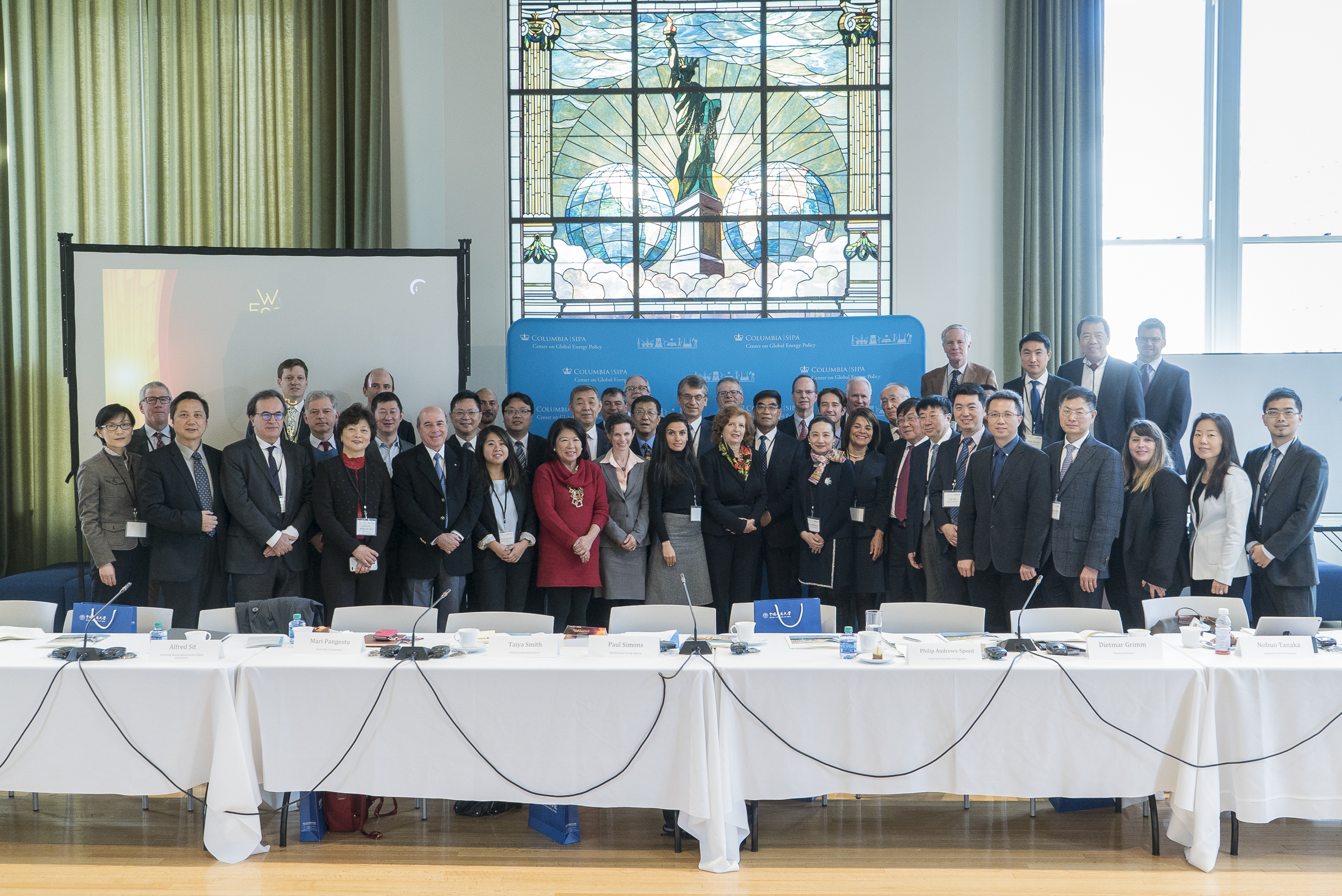
On November 19, a welcome banquet was held in the Center on Global Energy Policy, Columbia University and was presided over by David Sandalow, the Inaugural Fellow at the Center and the former U.S. Deputy Secretary of Energy.
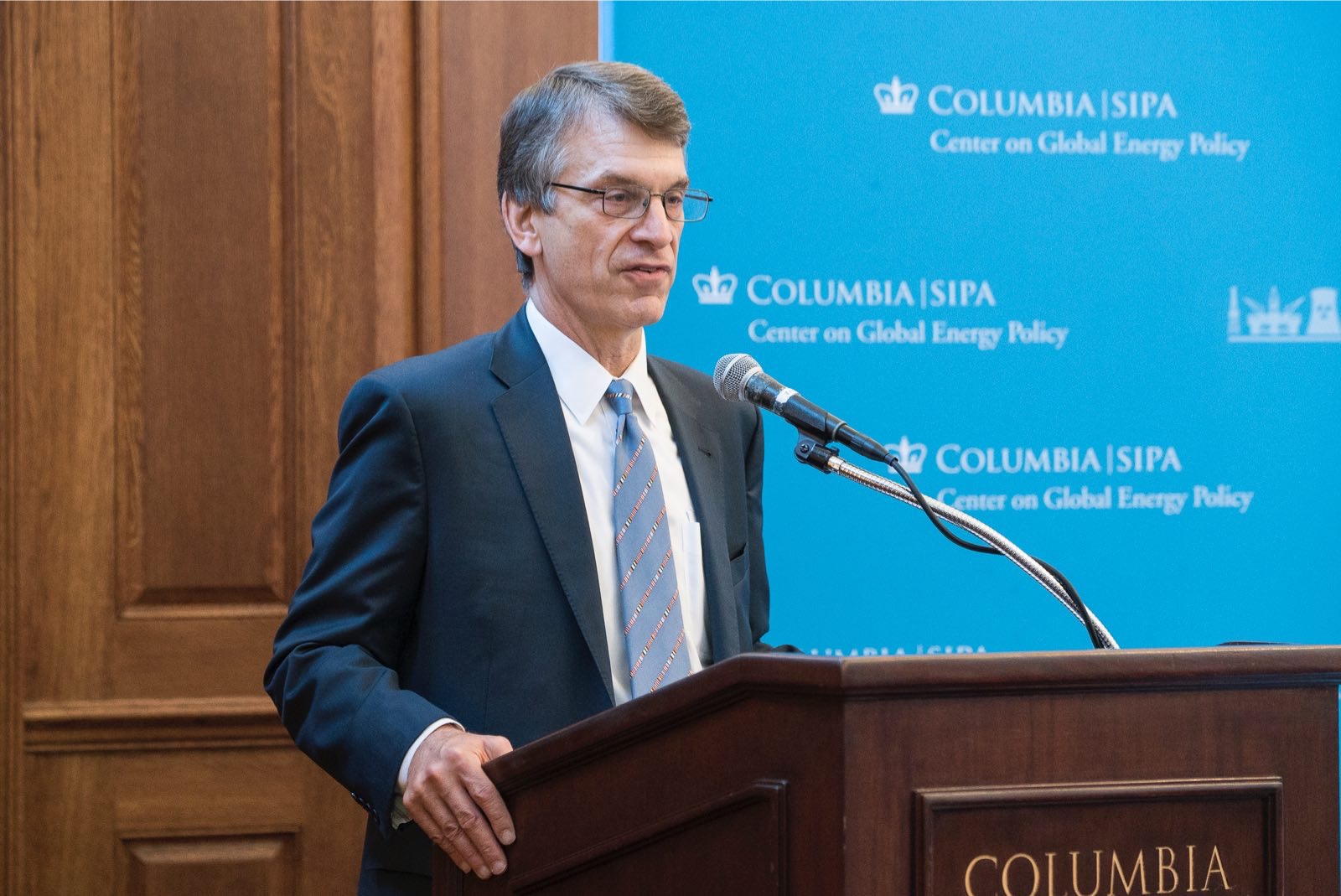
Fu Yucheng, the former Chairman of the Board of Sinopec and member of CPPCC Standing Committee, and Merit Janow, Dean of the School of International and Public Affairs, Columbia University, delivered a welcome speech respectively.
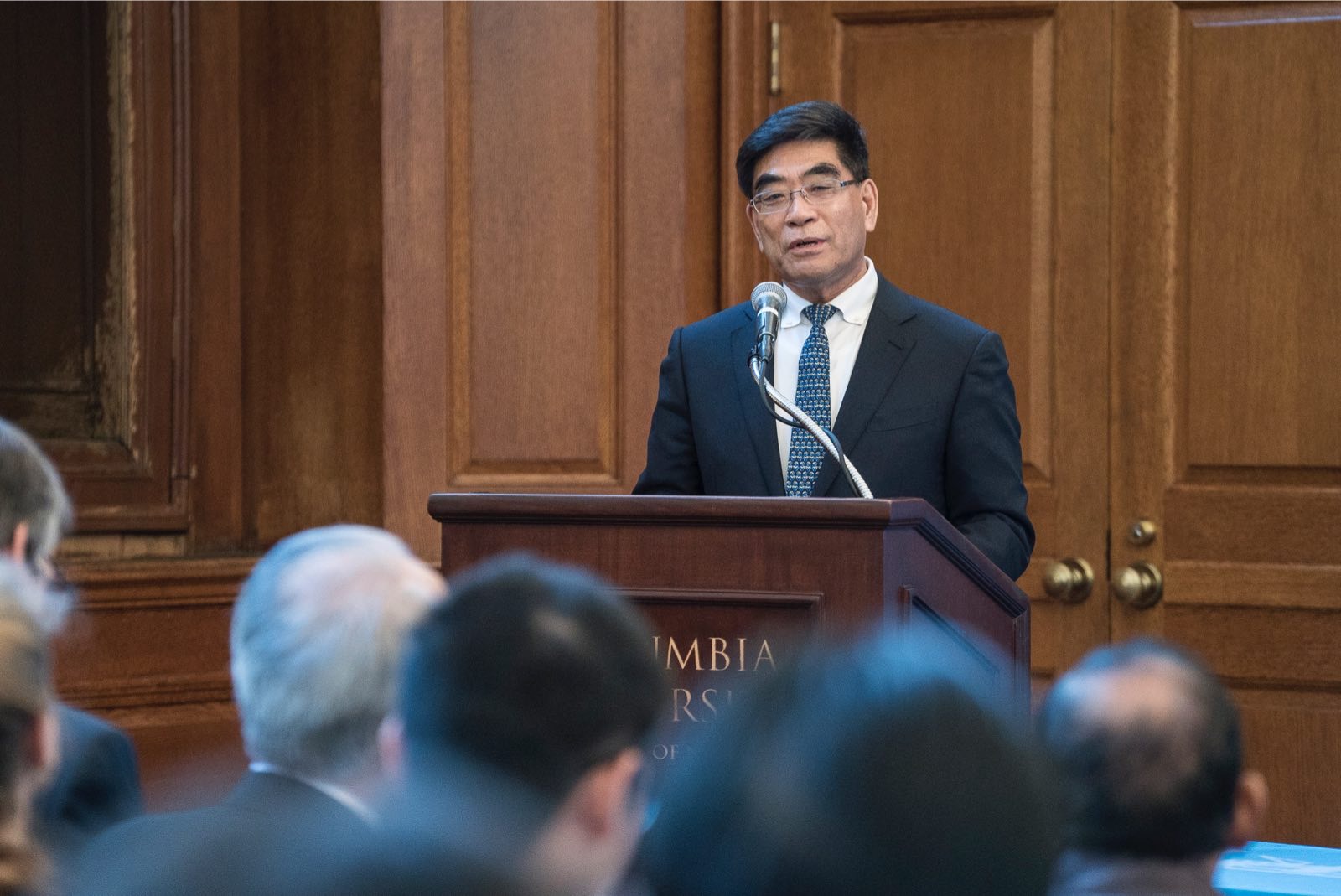
Jeffrey Sachs, a famous professor of development economics at Columbia University, delivered a keynote speech. He extended welcome to the Chinese delegation and stressed that China was offering a brand new development model featuring peace and sustainability to the world and that the “Belt and Road” Initiative presented a promising future as it would promote low-carbon development and cultural integration along it.
On November 20, the seminar proceeded at the Pulitzer Hall of Columbia University. It consisted of five parts, namely a keynote speech, introduction to the “Belt and Road” Initiative and its green development, renewable energy development in the context of green development of the “Belt and Road”, traditional energy development in the context of green development of the “Belt and Road” and the impact of green development of the “Belt and Road” on capital market.

David Sandalow and Xu Qinhua presided over the seminar.
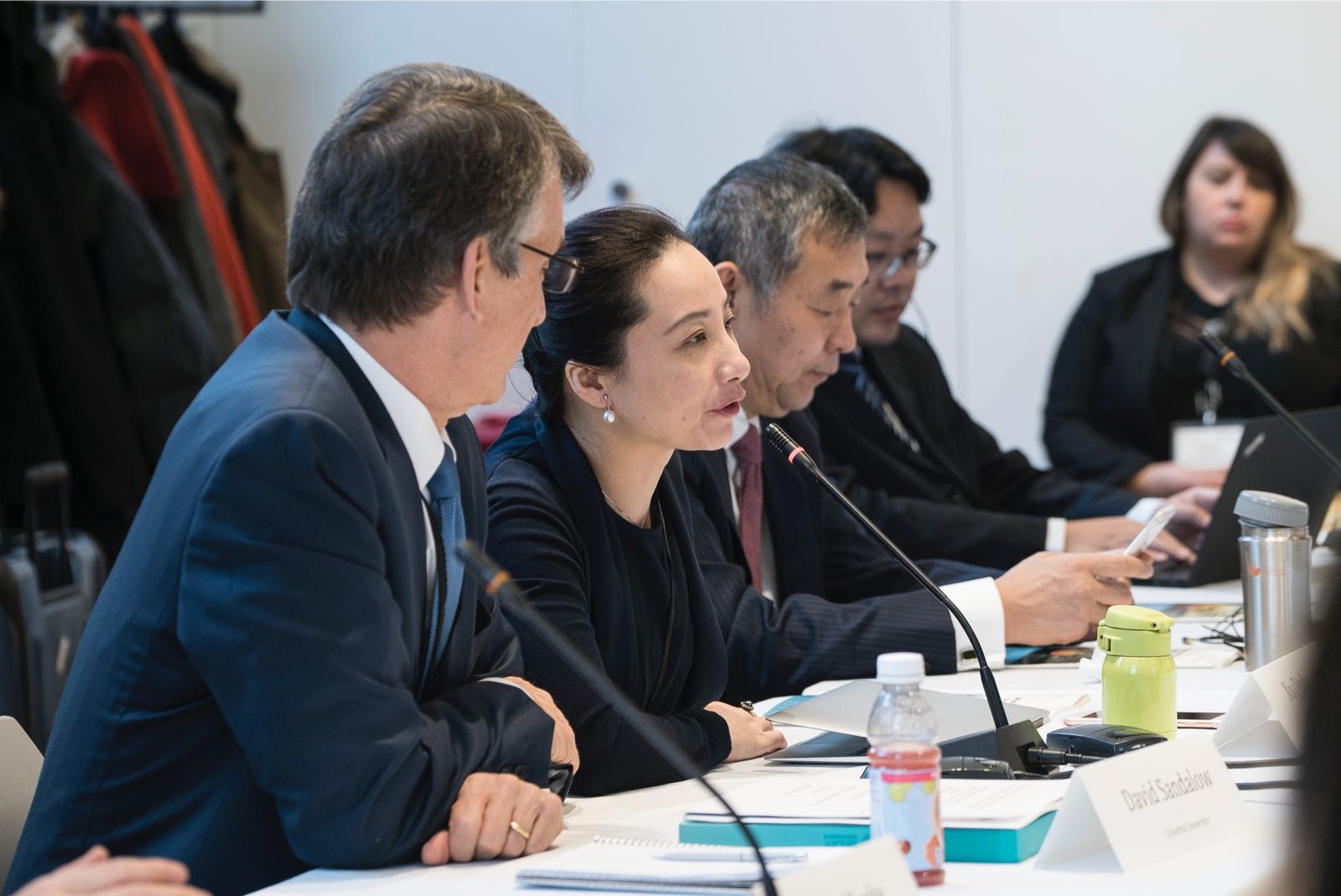
Chen Yongjun said that the "Belt and Road" Initiative proposed by China accorded with internal development demands of countries along with it and could boost regional sustainable development. The Initiative is, first of all, a business model. Economic development of countries along the "Belt and Road" depends on infrastructure construction and perfection, while infrastructure requires huge investments. China's “Belt and Road” Initiative can provide financial support for countries along with it through favorable policies, and then the tax base of these countries will gradually increase due to national development, so they will be able to repay the money, thus maintaining sustainable development of regions along the “Belt and Road”. Besides, the “Belt and Road” Initiative offers a new system and concept for the development of countries along with it.
Zhao Xijun said that capital market will play a key role in energy cooperation along the “Belt and Road”. An important goal of the “Belt and Road” is to solve the problem of financing for regional economic development. NDRC and Asian Development Bank (ADB) forecast that by 2020 and 2030, funds required by infrastructure investment in regions along the “Belt and Road” will amount to USD 10.6 trillion and USD 26 trillion respectively. The Chinese government plans to bring along investments of USD 135 billion by unveiling various policies. At present, research on energy finance for the “Belt and Road” lags far behind the relevant practice. In future, development of green finance in regions along the “Belt and Road” may be achieved in the following two pathways: one is green traditional finance, that is, transforming traditional securities into green securities and traditional funds into green funds; the other is to develop new green finance tools, for example, building the cleantech trading market.
According to Wang Ke, renewable energy will play a critical role in energy cooperation along the “Belt and Road”, which is also related to the measures China has taken to attain the emission reduction objective set forth in Paris Climate Agreement. Energy efficiency, renewable energy, and electrification rate are three pillars of China’s emission reduction policies. China intends to increase the electrification rate of energy uses to 35% and raise the proportion of wind and solar energy in power generation structure to 60% by 2050. The next three decades will see China becoming the world’s largest renewable energy market. China’s experience in renewable energy development can be used by countries along the “Belt and Road” for reference. The Chinese government should actively encourage enterprises to develop renewable energy technology and reduce the cost of power generation through clean technologies. In this regard, there is room for cooperation between China and the USA.
Liu Xu indicated large room for further development of traditional energy in the promotion of cooperation along the “Belt and Road”. Economic development of countries and regions along the “Belt and Road” and the solution of the “energy poverty” problem there will first drive an increase in the consumption of traditional energy such as coal, petroleum and natural gas in these countries and regions. Constant improvements of traditional energy cleaning technology facilitate cleaner utilization of such energy. Natural gas, as a traditional energy resource, will play a significant role in the future energy structure. Countries along the “Belt and Road” also boast abundant natural gas resources and huge natural gas consumption market. Therefore, interstate cooperation in natural gas will become an important part of energy cooperation along the “Belt and Road”.
Xu Qinhua suggested that RUC and Columbia University should further strengthen cooperative research on energy, environment, climate change and other fields. RUC is leading in respect of the research on policies in these fields, with profound disciplinary foundation and advantages. The meeting fully reflects that scientific research of RUC is international. The two universities can provide the US and Chinese governments with reference on policies for the green development of the “Belt and Road” through cooperative research, whilst promote information and data sharing and making China-US cultural and educational exchanges more scientific. Prof. Sandalow said that despite different voices and views with respect to the understanding of the “Belt and Road” Initiative, there was no doubt that China offered a good development model for countries along the “Belt and Road”. Renewable energy will play a key role in energy cooperation along the “Belt and Road”. Center for Research on Energy and Resource Strategies RUC and the Center on Global Energy Policy, Columbia University will enhance research cooperation based on the cooperation agreement on seed fund for joint research between the two universities, and strive to maintain such seminar mechanism lasting and sustainable.
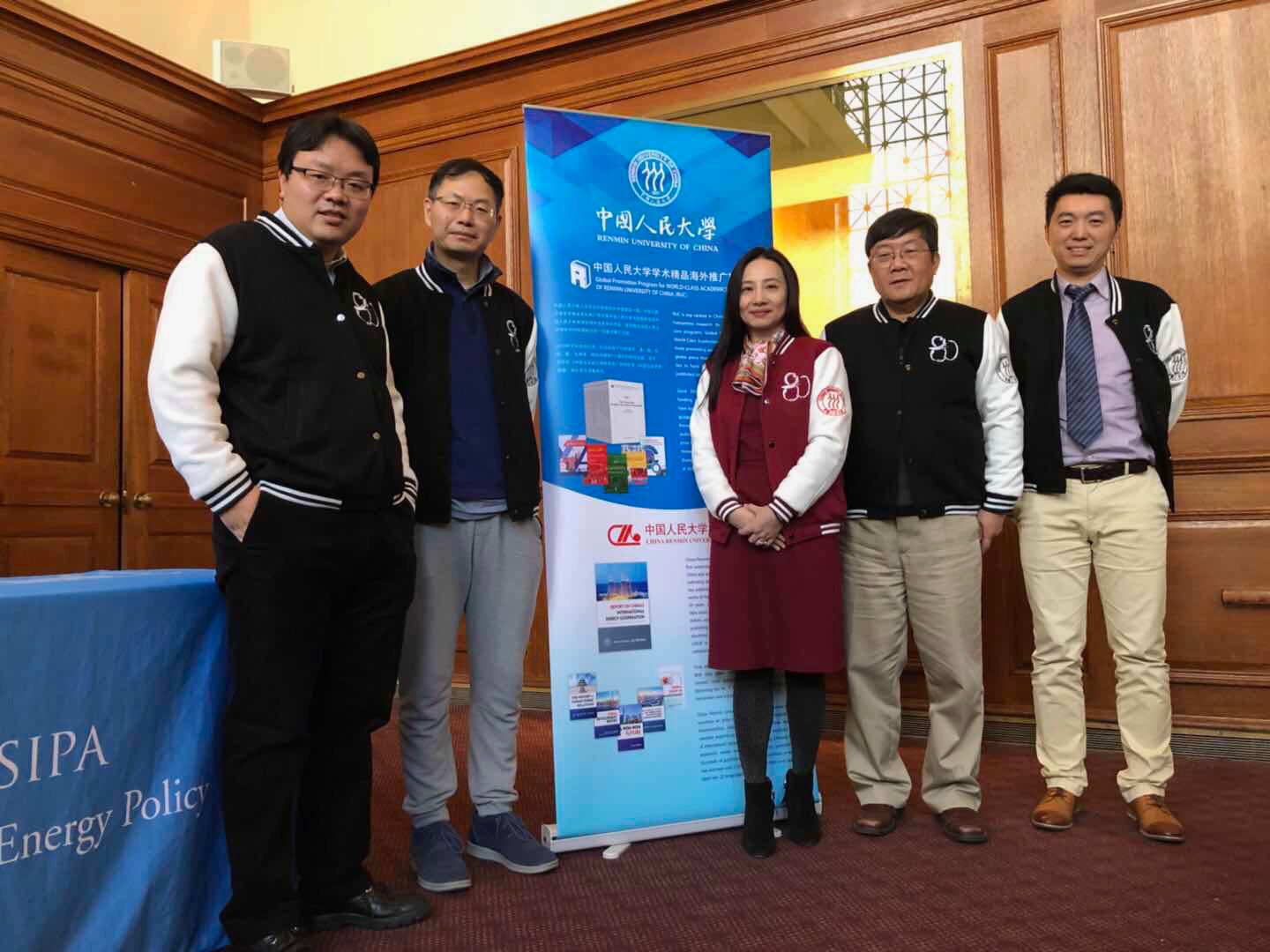
On November 21, the delegation participated in a campus dialogue organized by Columbia University, which more than 100 participants attended. On behalf of RUC’s visiting research group, Chen Yongjun and Zhao Xijun had deep exchanges on the overall vision of the “Belt and Road” Initiative and the understanding, financing and green finance of the “Belt and Road” as an economic development model with students and teachers of Columbia University respectively.